The Forest Watershed Research Centre within the Faculty of Forestry and Environmental Management at the University of New Brunswick is supported through research projects. The Centre uses scientific methods to address biophysical issues that arise from forest management operations, using watersheds as primary research and management units. The Centre is a partnership of industry, university and government dedicated to the development, application, and communication of watershed research (water, nutrients, air, energy, vegetation and soils) to promote sustainable and integrated forest management policies and practices.
We assert that:
 The integration of sustainable forest management in the context of a changing physical and socio-economic environment is feasible, and essential for enhancing the appreciation of forests by the public in general. This integration, however, requires new and innovative forest management practices.
The integration of sustainable forest management in the context of a changing physical and socio-economic environment is feasible, and essential for enhancing the appreciation of forests by the public in general. This integration, however, requires new and innovative forest management practices.- Understanding of primary resource flows through forested watersheds and soils (water, nutrients, air, energy) and the existing above- and below-ground conditions at the site-specific level is essential for addressing and integrating sustainable forest management into local land-use policies and related decision making.
- The Centre has the ability, experience, and resources to meet the watershed research component of sustainable forest management. As such, the Centre focuses on the modelling and mapping of topographically and hydrologically driven conditions and processes at high geo-spatial resolution (1 to 10 m).
- The Centre conducts knowledge-based communications including knowledge extension workshops.
- The research is conducted in a timely fashion and leads to management practices which can be implemented and monitored readily. This involves developing facilitative decision-support tools.
Partner-Based Research Projects
 Wet Areas Mapping (WAM) Initiative: determining flow channels, wet and dry areas, and the cartographic depth-to-water index (DTW) from bare-ground digital elevation models (DEMs): Alberta WAM (2013 Emerald Award Finalist; 2011 ASTech Honouree) – Nova Scotia WAM
Wet Areas Mapping (WAM) Initiative: determining flow channels, wet and dry areas, and the cartographic depth-to-water index (DTW) from bare-ground digital elevation models (DEMs): Alberta WAM (2013 Emerald Award Finalist; 2011 ASTech Honouree) – Nova Scotia WAM- Upland – Wetland delineation at high resolution (1-10m)
- Forest trafficability, all seasons/weather.
- Access, trail and route optimization using TRAIL
- Forest biomass allocation
- Stream water quality
- Forest site classification
- Soil re-mapping at high resolution, including the mapping of soil type, drainage, and other soil properties
- Forest hydrology modeling, using generalized parameters to represent changes in soil density, field capacity, permanent witling point, and soil permeability as these affect the rate of water and heat flow through soils, daily, year-round
- Soil organic matter and nutrient mineralization
- Indexing plant communities and tracking rare and invasive plants

